Marking time: Hermès’ new watch cuts a dash thanks to graphic designer Philippe Apeloig

With its new Slim d'Hermés watch, Hermès has added a brilliant design tick: the hour markers have been designed by the French graphic designer Philippe Apeloig...
As originally featured in (W*196)
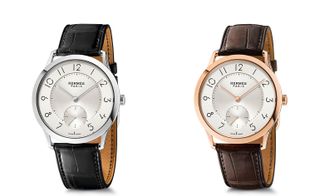
Hermès artistic director Pierre-Alexis Dumas approached Apeloig to create a new font having worked with the graphic designer on the identity redesign of Puiforcat - the Hermés owned silversmith
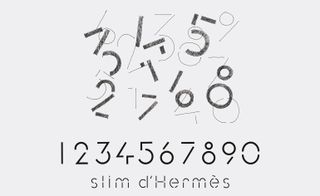
The fine breaks in the font not only define the watch's light character and the super-slim movement that powers the timepiece, but as with all La Montre Hermes' horological endeavours, there is a gentle humour ticking away

The physical design of the Slim d'Hermés watch is elegant, light and discreet, so there had to be a connection between the font and the movement
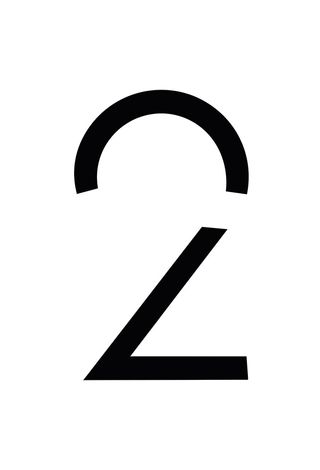
'The Slim d'Hermés font is very fine, a combination of straight and curved lines, a single line that is broken, with no difference in thickness. The font is simple, sober,' says Apeloig of the thinking behind his beautiful dial digits

'The watch dial is very small and you have to think of the function, so the font has to create an interesting dialogue between the numbers and the shape. It should not be an effort to see the numbers when you glance at the watch,' says Apeloig of the design parameters of horological dial design
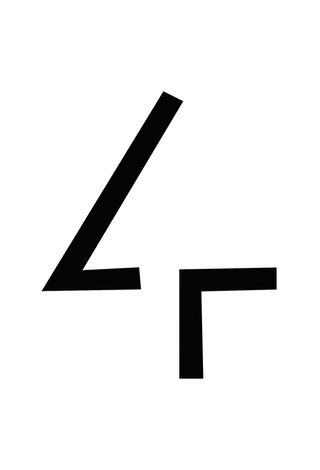
The fine breaks in the font convey a message: 'They represent the "start and stop" of time. The fact that they are not complete creates a kind of attraction, like a magnet that attracts the lines together but also the viewer to look,' explains Apeloig
Wallpaper* Newsletter
Receive our daily digest of inspiration, escapism and design stories from around the world direct to your inbox
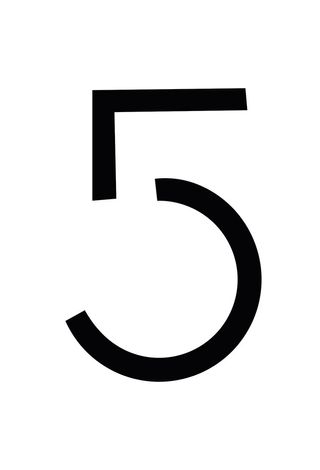
'Typography is a key part of Hermés,' says Hermès artistic director Pierre-Alexis Dumas. 'I am always impressed by Philippe's didactic style. His essential approach that says: "what can I take away until it doesn't say anymore?"

'The bezel is designed to give more space on the dial - it left a beautiful space for the typeface,' says Philippe Delhotal, creative director at La Montre Hermés. 'My obsession for 20 years at Hermés was to find a graphic designer who could work on the micro scale watch design demands'
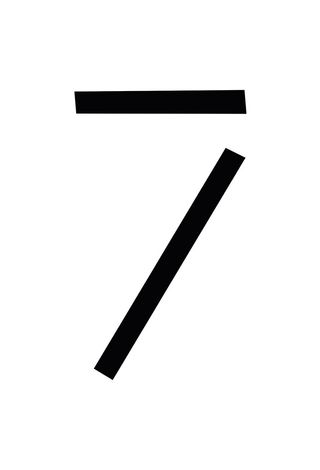
Creativity and talent must come with a fresh eye: Delhotal redesigned Puiforcat brand identity and logo. 'I was very impressed by his didactic style - he decontructs the issues of the brief. That has to be resolved to reach a natural conclusion - a logic. His essential approach is, "What can I take away until it doesn't say anymore?" His is not a formal style - it is a Giacometti approach'
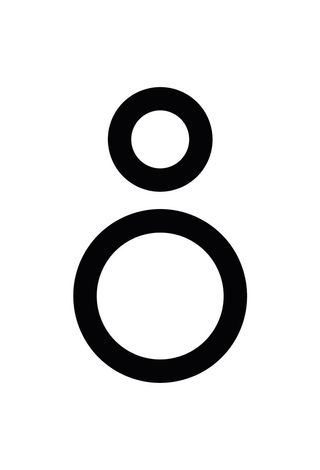
On switching from one design discipline to another, Apeloig says: 'Most of my work inolves type and letters that have to communicate a message - with a watch dial design, you have to invent something; the numbers already exist. Then it is about proportion'
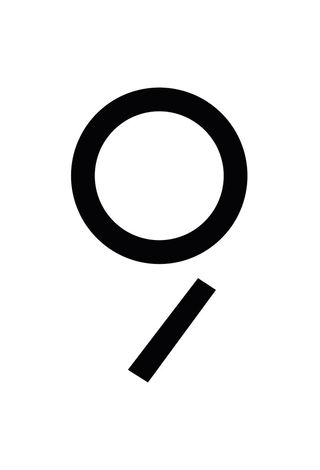
He adds, 'Typography is a balance between shape and emptiness. It has some power as you have to deal with space'

The elegant timepiece is available from Hermes.com in October
Caragh McKay has been a contributing editor at Wallpaper* since 2014. She was previously watches & jewellery director and is currently our resident lifestyle & shopping editor. Caragh has produced exhibitions and created and edited titles for publishers including the Daily Telegraph. She regularly chairs talks for luxury houses, Van Cleef & Arpels and Cartier among them. Caragh’s current remit is cross-cultural and her recent stories include the curious tale of how Muhammad Ali met his poetic match in Robert Burns and how a Martin Scorsese film revived a forgotten Osage art.
-
 Berlinde De Bruyckere’s angels without faces touch down in Venice church
Berlinde De Bruyckere’s angels without faces touch down in Venice churchBelgian artist Berlinde De Bruyckere’s recent archangel sculptures occupy the 16th-century white marble Abbazia di San Giorgio Maggiore for the Venice Biennale 2024
By Osman Can Yerebakan Published
-
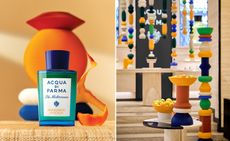 Discover Acqua di Parma’s new Mandarino di Sicilia fragrance at Milan Design Week 2024
Discover Acqua di Parma’s new Mandarino di Sicilia fragrance at Milan Design Week 2024Acqua di Parma and Fornice Objects bring the splendour of Sicilian mandarin fields to Milan to celebrate new fragrance Mandarino di Sicilia
By Simon Mills Published
-
 First look at Samba Room, London’s innovative cocktail lounge packed with Brazilian energy
First look at Samba Room, London’s innovative cocktail lounge packed with Brazilian energyLondon’s Samba Room, an extension of SushiSamba, is a dynamic bar, lounge and private dining space designed by Fabled Studio
By Tianna Williams Published
-
 Samuel Ross unveils his Hublot Big Bang watch design
Samuel Ross unveils his Hublot Big Bang watch designSamuel Ross brings a polished titanium case and orange rubber strap to the Hublot Big Bang watch
By Pei-Ru Keh Published
-
 Playful design meets chic heritage in the Hermès Kelly watch
Playful design meets chic heritage in the Hermès Kelly watchThe new Kelly watch from Hermès rethinks the original 1975 timepiece
By Hannah Silver Last updated
-
 Discover the tonal new hues of the classic Nomos Club Campus watch
Discover the tonal new hues of the classic Nomos Club Campus watchThe Nomos classic wristwatch Club Campus now comes in two new collegiate colours. The perfect graduation gift from the Glashütte manufacture
By Hannah Silver Last updated
-
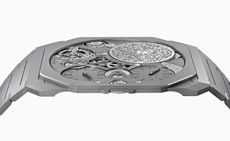 Bulgari unveils the thinnest mechanical watch in the world
Bulgari unveils the thinnest mechanical watch in the worldThe new Bulgari Octo Finissimo Ultra watch is a record-breaking feat of engineering
By Hannah Silver Last updated
-
 Breitling and Triumph unite on a racy new watch and motorcycle
Breitling and Triumph unite on a racy new watch and motorcycle1960s design codes are infused with a contemporary edge in the collaboration between Breitling and Triumph
By Hannah Silver Last updated
-
 Gerald Genta’s mischievous Mickey Mouse watch design is rethought for a new era
Gerald Genta’s mischievous Mickey Mouse watch design is rethought for a new eraThe Gerald Genta Retrograde with Smiling Disney Mickey Mouse watch pays tribute to Genta’s humorous design codes
By Hannah Silver Last updated
-
 Shinola honours Georgia O’Keeffe with a new watch
Shinola honours Georgia O’Keeffe with a new watchShinola Birdy watch stays faithful to the minimalist codes of Georgia O’Keeffe’s painting, My Last Door
By Hannah Silver Last updated
-
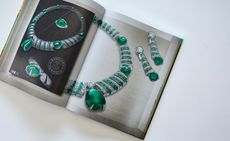 Bulgari’s new book celebrates women and high jewellery
Bulgari’s new book celebrates women and high jewelleryBulgari Magnifica: The Power Women Hold, published by Rizzoli New York, takes a closer look at the female muses who inspired the spectacular Magnifica high jewellery collection
By Hannah Silver Last updated